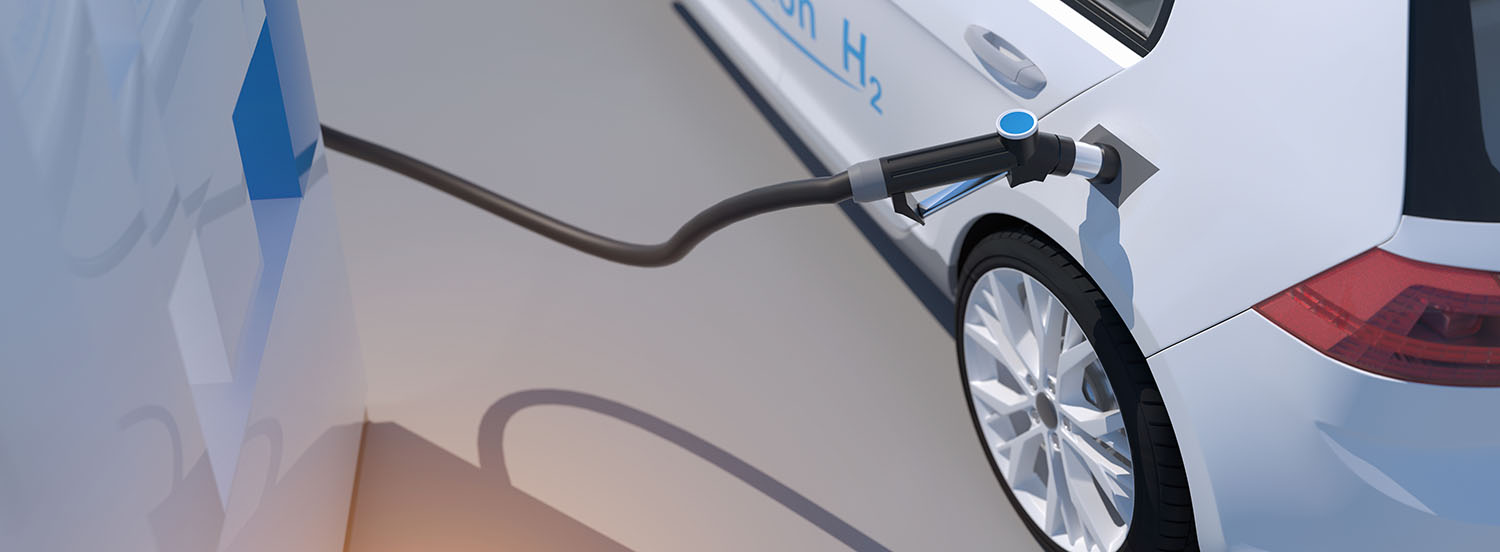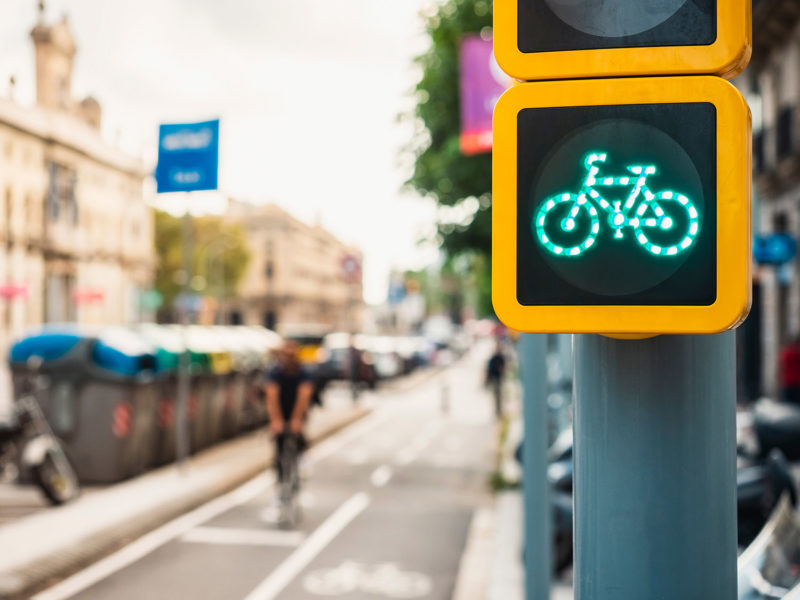

Hydrogen cars: the ultimate alternative?
Is it possible for a car not only not to pollute, but also to purify the environment? Electric vehicles dominate the transition to sustainable transport, but what about hydrogen cars? Let’s take a look at the advantages of this “green fuel”.
Leading global brands such as Toyota and Hyundai are making a strong commitment to hydrogen cars. At the moment they are still too expensive, but they promise to revolutionise global mobility. These vehicles are powered by hydrogen (the most abundant element on Earth), which is extracted from seawater through a process of electrolysis. To drive, the vehicle is powered by hydrogen and air, but the air must be pure, which is why the engine is equipped with a stringent particle filtering system. This is how the engine retains the polluting particles so that what comes out of the exhaust pipe is water vapour, with purer oxygen than it went in. Is this technology a dream, or is it the future?
Hydrogen car technology is innovative in many ways and is an engineering challenge. We generally differentiate between two types of hydrogen engines: combustion and conversion. So, while combustion engines burn hydrogen in the engine similarly to petrol engines, with the only difference being that what is expelled from the exhaust pipe is water vapour instead of polluting smoke, conversion engines convert this hydrogen into electricity, thanks to a fuel cell, to drive the car’s electric motor.
A fuel cell is therefore a device based on electrochemistry, i.e. it generates electrical energy from chemical energy. It always does so with the support of a fuel and an oxidant. In this case, one pole of the battery (the anode) contains hydrogen and the other (the cathode) contains oxygen. The advantage of this type of battery is that it does not need to be recharged and operates continuously, so users have a constant flow and consumption of reagents, which differentiates it from conventional batteries.
Electric cars vs. hydrogen cars
Precisely this autonomy in recharging is the advantage that could make the hydrogen car end up leading the ecological transition, even overtaking the electric car. In fact, according to the Department of Advanced Materials for Energy at the Catalonia Institute for Energy Research (IREC), the electric car is considered a clean means of transport because it does not consume fossil fuels. However, the drawback of electric cars, according to IREC, is that the battery needs to be recharged with electricity from the grid, and many of us know first-hand what this means in terms of expense, besides the time it takes. Despite being considered a non-polluting method of transport, for it to be truly green, the type of electricity production it requires must also be green. This is a disadvantage that, for the time being, is also present in the hydrogen engine fuel cell, since obtaining hydrogen through the electrolysis of water, still requires a lot of energy.
In contrast, fuel cell-based cars, such as hydrogen cars, combine the range of conventional (petrol) cars with the recreational and environmental benefits of electric cars. Therefore, the most obvious advantage is the absence of harmful emissions and toxic gases. Filling the hydrogen tank takes no more than five minutes, unlike the time-consuming refuelling of electric cars, which can take hours. And in terms of range, hydrogen is also in front, with a range of up to 500 kilometres.
Charging points, the big problem
In 1839, the Welsh physicist William Grove invented the fuel cell, without much fuss. It was not until the 1960s that this technology became popular because it powered NASA’s Gemini space probe, which ran exclusively on fuel cells. In wheeled vehicles, it came later, in 2008, from the automobile manufacturer Honda.
Today, the range has increased slightly, and the AutoBild portal lists the Toyota-Mirai and the Hyundai-Nexo as the best hydrogen cars, with the Hyperion XP-1 sports car and the BMW-Hydrogen Next SUV expected to be launched later this year.
In 2019, 7,500 hydrogen vehicles were sold globally, while electric vehicles accounted for 2.1 million sales. Urban transport and goods vehicles are switching to electric vehicles, and the number of refuelling points is also growing. In the case of hydrogen, there are only three points in Spain. It is a complicated moment, with few recharging points and low customer demand, which places the sector at a difficult point of progress and continues to put the focus on energy companies. In countries such as Germany, hydrogen manufacturers and producers have already joined forces to draw up a plan that will end with 130 refuelling points and 60,000 hydrogen cars on the road by 2022.
Thus, despite the current commitment of many governments and brands to hybrid vehicles, environmental requirements leave the door open to hydrogen vehicles, which are awaiting the union of manufacturers, energy companies and administrations to experience their moment of expansion.
Do you want to be the first to receive the latest news about 11Onze? Click here to subscribe to our Telegram channel





Pense que encara estem amb el cotxe elèctric, però vamos tot el que siga reduir la contaminació…benvungut sigui!
Ja s’està dient que el cotxe elèctric serà el preàmbul al cotxe definitiu, que segurament serà el d’hidrogen, la dificultat més gran sembla ser que és el transport de l’hidrogen i fer les corresponents estacions de servei de l’hidrogen. Moltes gràcies pel teu comentari, Jordi!!!
👏
Gràcies, Daniela!!!
Intentem fer el mon més habitable per al bé de tothom i no un lloc per el negoci d’uns pocs.
Hi estic, del tot d’acord, Pere.
Qui penseu que el cotxe elèctric és la sol·lució, considereu primer tota la contaminació des que el liti surt del salar dAtacama a Xile, la Xina O Austràlia, la que es produeix en la seva transormació en sals adeqüades per a les bateries, i segon, que igual que el petroli, el liti és una matèria primera finita. A Israel estaven fent proves amb sals d’alumini, però no oxiden tant bé com el liti. En qualsevol cas, tard o d’hora s’haurà de trobar una alternativa als vehicles amb bateria de liti, i l’hidrògen podria ser-ho. Però ja hi ha un petit imperi muntat al voltant del liti, amb l’emperador Musk al capdavant.
I el tema dels preus fa inviable la transició de tothom a elèctric. Al meu parer, s’haurien d’oferir ajuts de més quantia als cotxes més contaminants en primer lloc, els propietaris “potser” no poden fer una despesa tan gran, i són els que cal eliminar en primer lloc (els vehicles, no pas els propietaris, eh?). Els vehicles més nous poden esperar. No contaminen tant.
Altra reflexió, sobre el biodièsel i el bioalcool tant de moda fa un temps, si fem servir el blat de moro per produïr-los treient-ho a comunitats que el necessiten per menjar i sobreviure, tampoc no fem res.
Caldria trobar un combustible adeqüat ambientalment i solcialment.
Gràcies, Cristina, per aquesta aportació tan acurada i detallada. Esperem que tots aquests inconvenients tinguin solució tècnica (que n’estic convençut), però, sobretot, que la solució arribi a temps.
Em quedo amb aquest fragment el qual resulta clau: “Actualment encara són massa cars”. Resulta pràcticament impossible iniciar una revolució mediambiental amb uns preus inasumibles per a la gran majoria d’economies familiars. Allò pitjor?, que mentre es preten defensar l’existència d’una etapa de transició, els preus dels combustibles van experimentant increments desmesurats en molts casos i tal i com passa amb la llum, gràcies a l’existència d’impostos especials. Resum?, defensem el mediambient sagnant la butxaca del ciutadà.
Gràcies per la teva reflexió, Laude!
Es el futur
Potser serà el futur, però el present ja és elèctric
Calen molts gestos encara per part dels governs, exemples i ajuts per facilitar una correcta transició. Però està clar que la ciutadania, cada cop mes ofegada, continuarà pagant els plats.
La transició arribarà, la cosa és saber quan i com. Jo tinc l’esperança que sigui de la millor manera per al ciutadà.
No en queda tant per estandaritzar l’hidrogen…
De mica en mica Laura.☺️
ok
🙏
A dia d’avui veig el vehicle a hidrògen molt llunyà encara, mentre que l’elèctric a bateria ja és una realitat. Com heu dit, només hi ha 3 hidrogeneres a l’estat. Ens podem preguntar el per que, entre les respostes, evidentment que no hi ha vehicles, però la més important, el cost en mesures de seguretat que s’han d’assumir per la seva construcció és elevadissim. Per obtrenir-lo es necesiita el triple d’electricitat que la que gastaries en un elèctric. Un cop fabricat necessita transport i emmagatzematge. I crec que el més important, si tan s’età promocionant des de les altes esferes, sospito que és per tenir-ne ells el control quan el petroli vagi a la baixa. És difícil, car i perillós obtenir hidrògen a les nostres cases, d’electricitat ja en podem obtenir avui sense un gran esforç. I crec que ens hem de fer propietaris de la nostra energia de kilometre zero. Per això no veig l’hidrogen com a alternativa a curt plaç alenys
Exacte JM, totalment d’acord.
Cal apostar per els VE elèctrics, ja que són ara una solució a la mobilitat, i ampliar la xarxa de recàrrega.
Dedicar recursos al H2, es retrasar la transició a la ME.
Gràcies per compartir la teva reflexió, Josep Maria!
Es la millor alternativa per a la sostenibilitat
👍
S’ha de cercar la máxima sostenibilitat en tot el que fem i produim….
Totalment d’acord!
👍
💛